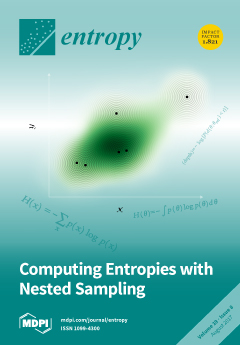The well-known Jarzynski equality, often written in the form
, provides a non-equilibrium means to measure the free energy difference
of a system at the same inverse temperature
[...] Read more.
The well-known Jarzynski equality, often written in the form
, provides a non-equilibrium means to measure the free energy difference
of a system at the same inverse temperature
based on an ensemble average of non-equilibrium work
W. The accuracy of Jarzynski’s measurement scheme was known to be determined by the variance of exponential work, denoted as
. However, it was recently found that
can systematically diverge in both classical and quantum cases. Such divergence will necessarily pose a challenge in the applications of Jarzynski equality because it may dramatically reduce the efficiency in determining
. In this work, we present a deformed Jarzynski equality for both classical and quantum non-equilibrium statistics, in efforts to reuse experimental data that already suffers from a diverging
. The main feature of our deformed Jarzynski equality is that it connects free energies at different temperatures and it may still work efficiently subject to a diverging
. The conditions for applying our deformed Jarzynski equality may be met in experimental and computational situations. If so, then there is no need to redesign experimental or simulation methods. Furthermore, using the deformed Jarzynski equality, we exemplify the distinct behaviors of classical and quantum work fluctuations for the case of a time-dependent driven harmonic oscillator dynamics and provide insights into the essential performance differences between classical and quantum Jarzynski equalities.
Full article


